- Sep 27, 2022
How to Catch more Bass from a Kayak: Our Top Tips & Tackle Picks
Kayak bass fishing can be a fun and rewarding experience, especially if you are catching fishing. Learn how to put more fish in your kayak.
Even after many years of recreational and tournament kayak bass fishing, there are days when it can be a struggle to catch fish. Typically, I end up finding and catching bass, but occasionally, it just doesn’t work out. That’s OK. It’s still been a great day fishing in the kayak.
Whether you’ve been bass fishing for a while or are about to hit the water for your first kayak outing, catching these elusive fish can present a challenge, and kayak bass fishing differs from fishing from a larger boat or from the bank. Don’t get frustrated or give up. Bass fishing is supposed to be challenging, and the challenge is part of what makes it fun!
These kayak fishing tips, developed through trial and error and much time spent on the water, can help make your kayak bass fishing outings more fruitful.
Choose Easy to Fish Baits
Having a confidence bait in bass fishing is very important. Find a technique you know how to excecute and trust to catch fish. For kayak bass fishing, it is important to choose baits and techniques that lend themselves well to a kayak fishing approach.
Your kayak will move in the water as you fish and your vantage is low. Several techniques are easily executed while seated and drifting. Good bait options include a Texas rigged worm, soft-plastic jerkbait, jig, spinnerbait, square-bill crankbait and popper.
Walking a topwater lure, working a jerkbait, flipping and punching are examples of techniques that require you to stand or to be stationary to work the baits correctly and that can be more difficult from a kayak.
Master the Wind
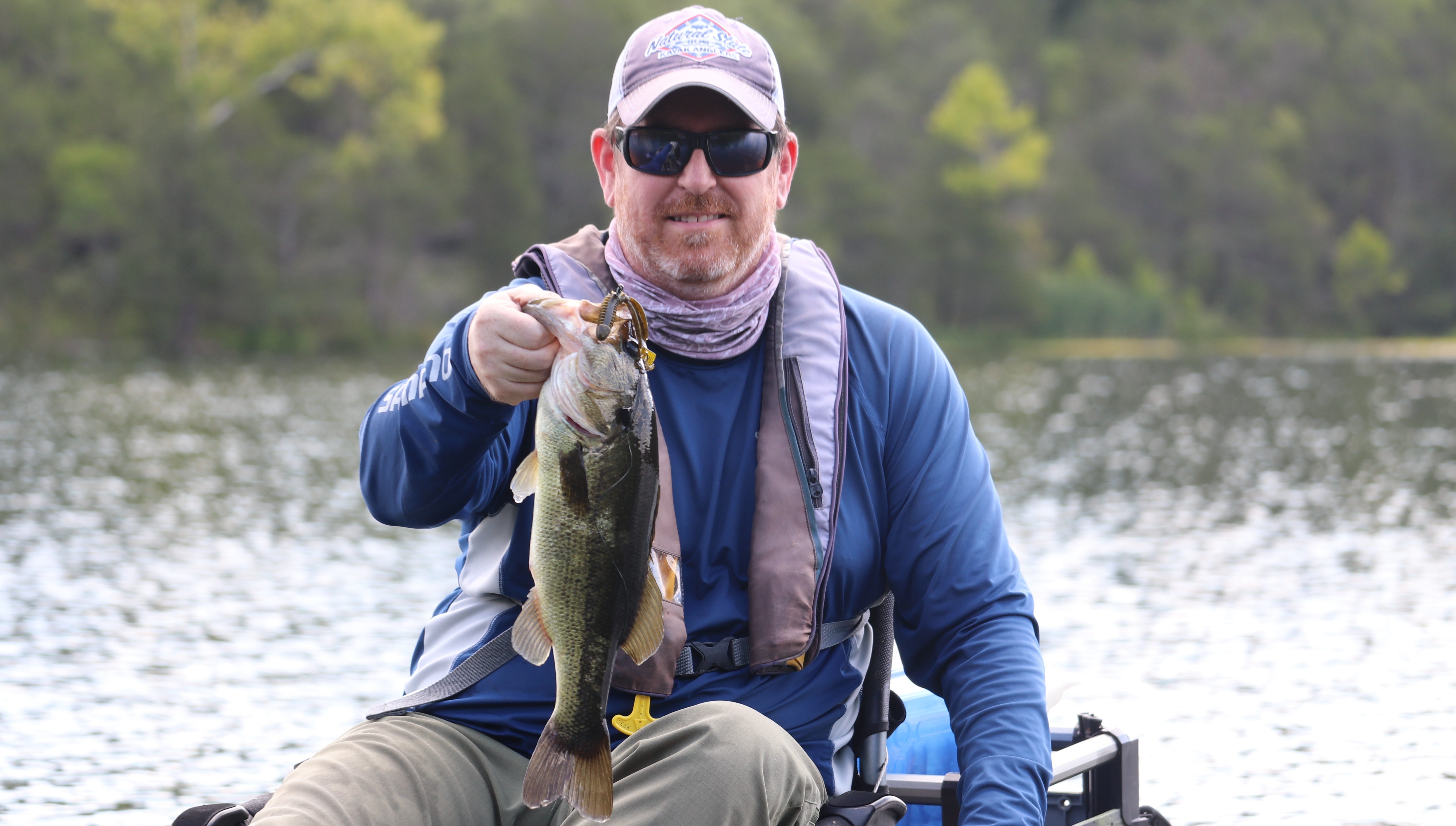

Nothing is more challenging for a kayak angler than dealing with wind, especially if you are paddling. As a rule, you want to fish banks and pieces of cover that are being hit by wind, which can put fish in the mood to bite.
Retrieving your bait with the wind and not against it is a best practice, as well. In a kayak, however, it is very difficult at times to fish a windy point or a wind bank and stay in position for good casts. An easy solution to this is to position your kayak against the bank and cast out across the point.
This approach can work well because then you are fishing along with the wind, and it is a different retrieve angle than fish see most of the time. This an underrated and underutilized technique.
Watch the Weather
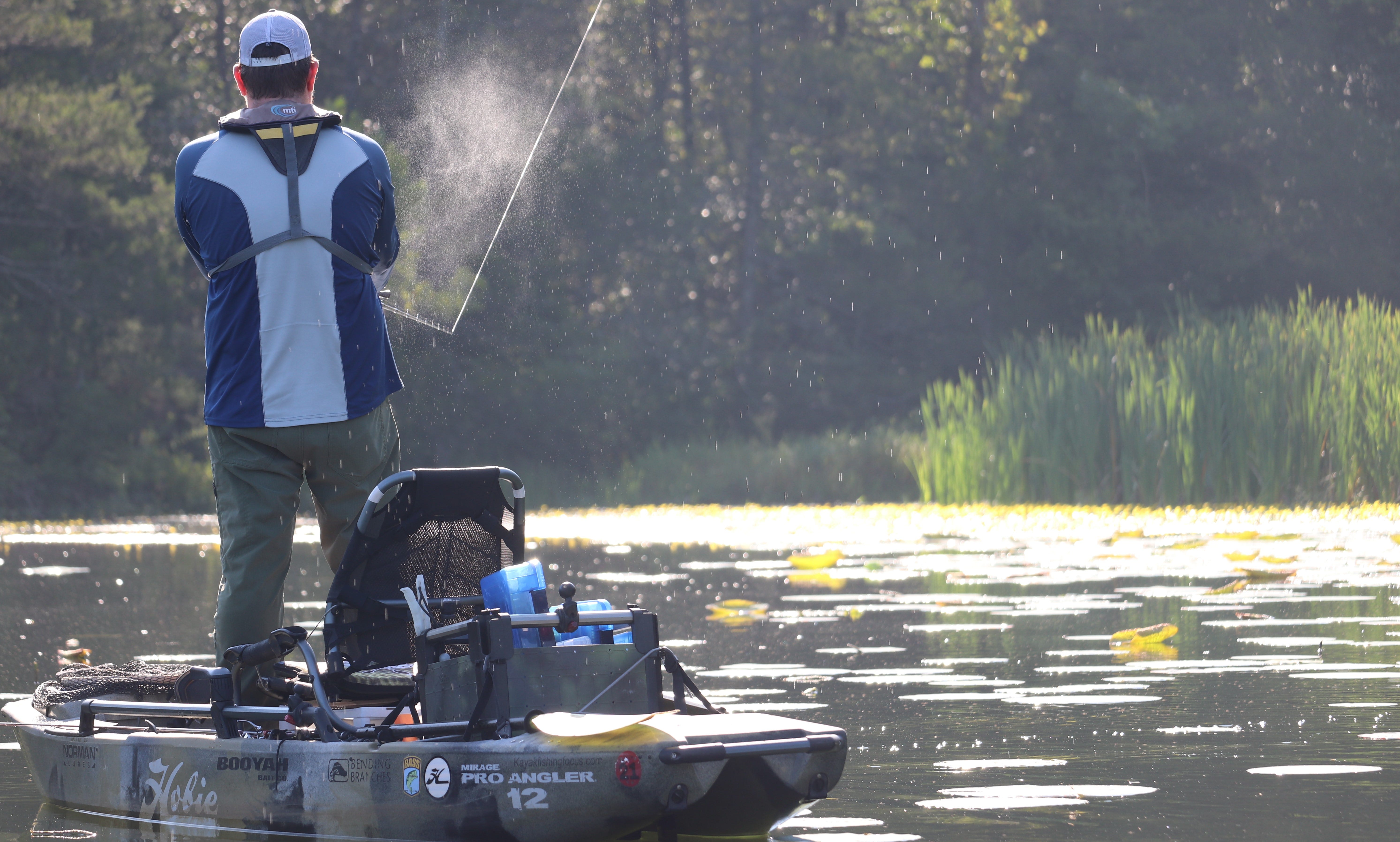

If you want to know what the weekend weather is going to do, ask a good fisherman. Understanding how the weather affects fish behavior is critical for determining how to approach each day on the water.
If it is pre-frontal, cloudy and windy, moving baits like crankbaits and spinnerbaits may be the key for the day. Sunny and calm tells you it is likely time to slow down, and that you may need a more patient approach fishing a Texas-rigged worm, jig or Ned rig. But you have to experiment to get a feel for various weather situations.
Most importantly, if there is a chance for a storm, watch the sky or keep close eye on a weather app. You do not want to be crossing a body of water in a thunderstorm with rods sticking up in the air from your kayak, so have a plan to get to shore or shelter in a covered dock.
Use Google Maps & Google Earth
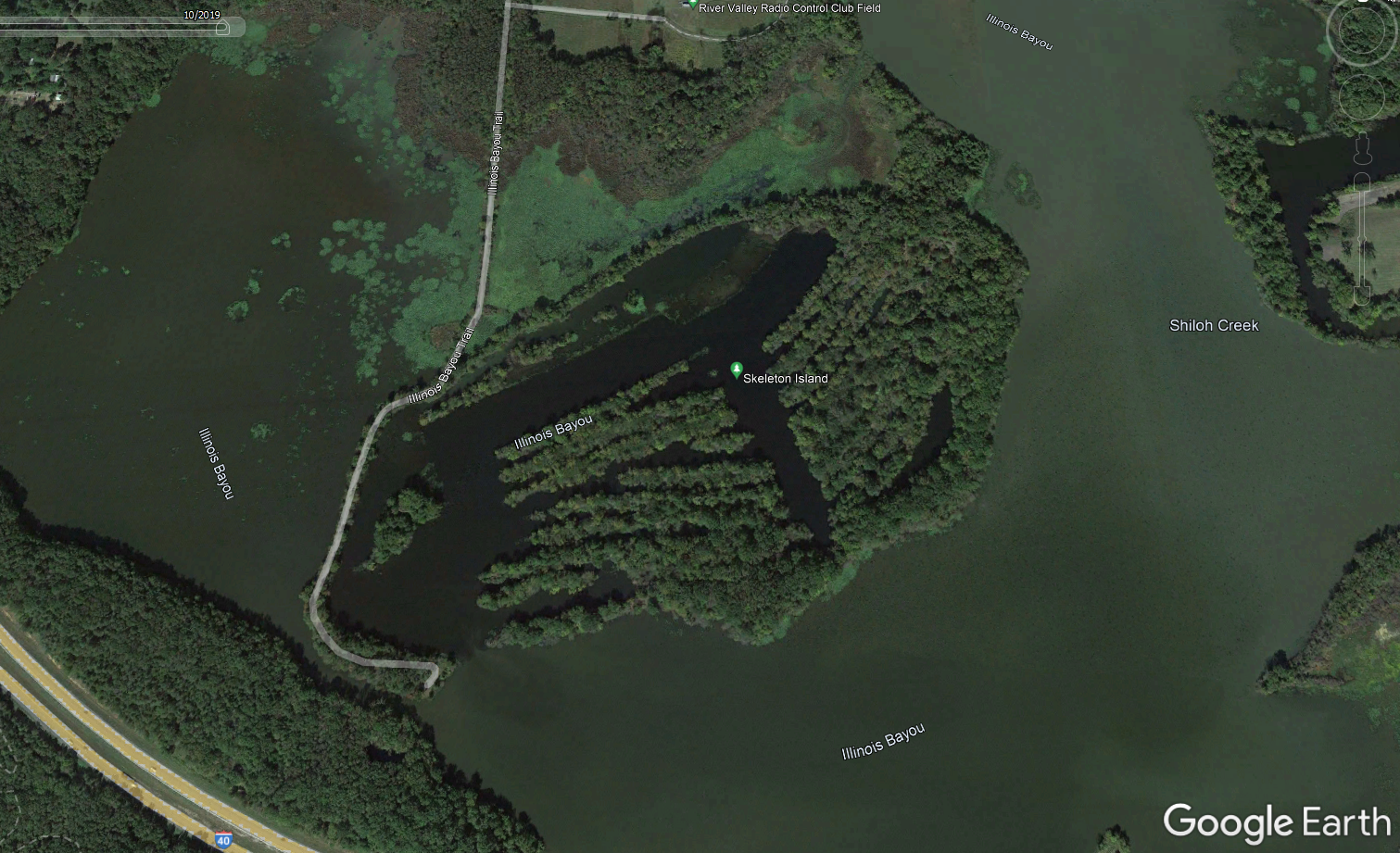

Whether you fish big lakes, small lakes or rivers, part of the fun of using a kayak for bass fishing is the chance to go to new places. Use Maps to look for traditional launches, bridges or even old dirt roads that run to the water’s edge.
Taking the time to scour Google Maps, using the satellite view, or use Google Earth reveals far more than new launch points. It provides a good view of the lake and topography so you can get a bird’s eye view of the water and see things like prominent points, broad flats and even boulders and brush that might not be visible from your kayak.
If you want to avoid boats on big lakes, look for roads or other routes that would allow you to put in at the back end of large creek arms instead of the busy boat ramp.
Land More Fish
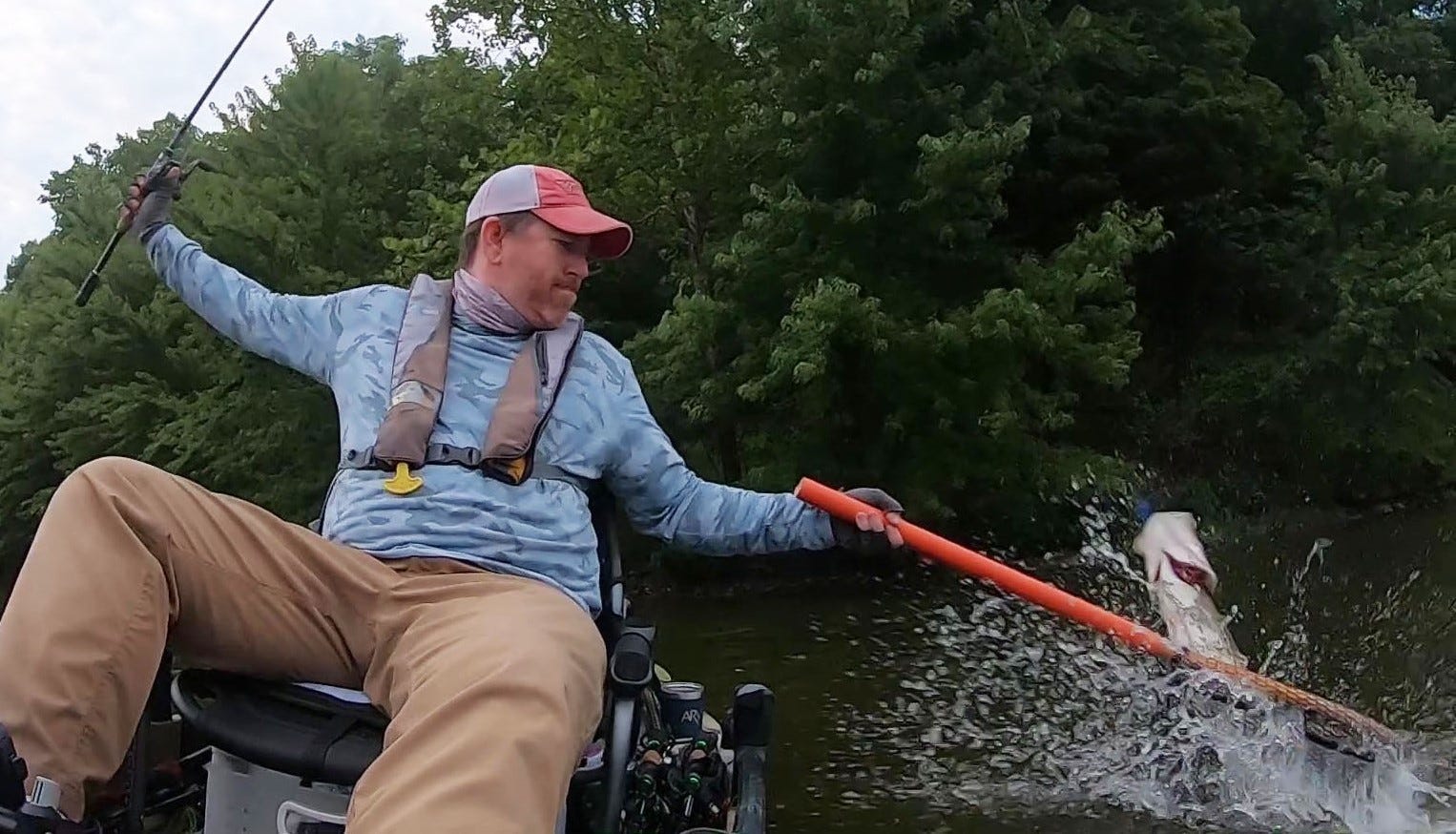

Finding bass and getting them to bite is just the beginning. Fighting a fish from a kayak is different than fighting a fish from a bass boat. The bass may take you on a ‘sleigh ride’ if big enough, and often may try to surge under and to the other side of your kayak.
Having a net with a significant handle helps you reach these fish and get them in the boat as efficiently as possible. A big part of what makes kayak fishing so addictive is the feeling a big one on the line with you being so close to the water.
Captain Your Kayak
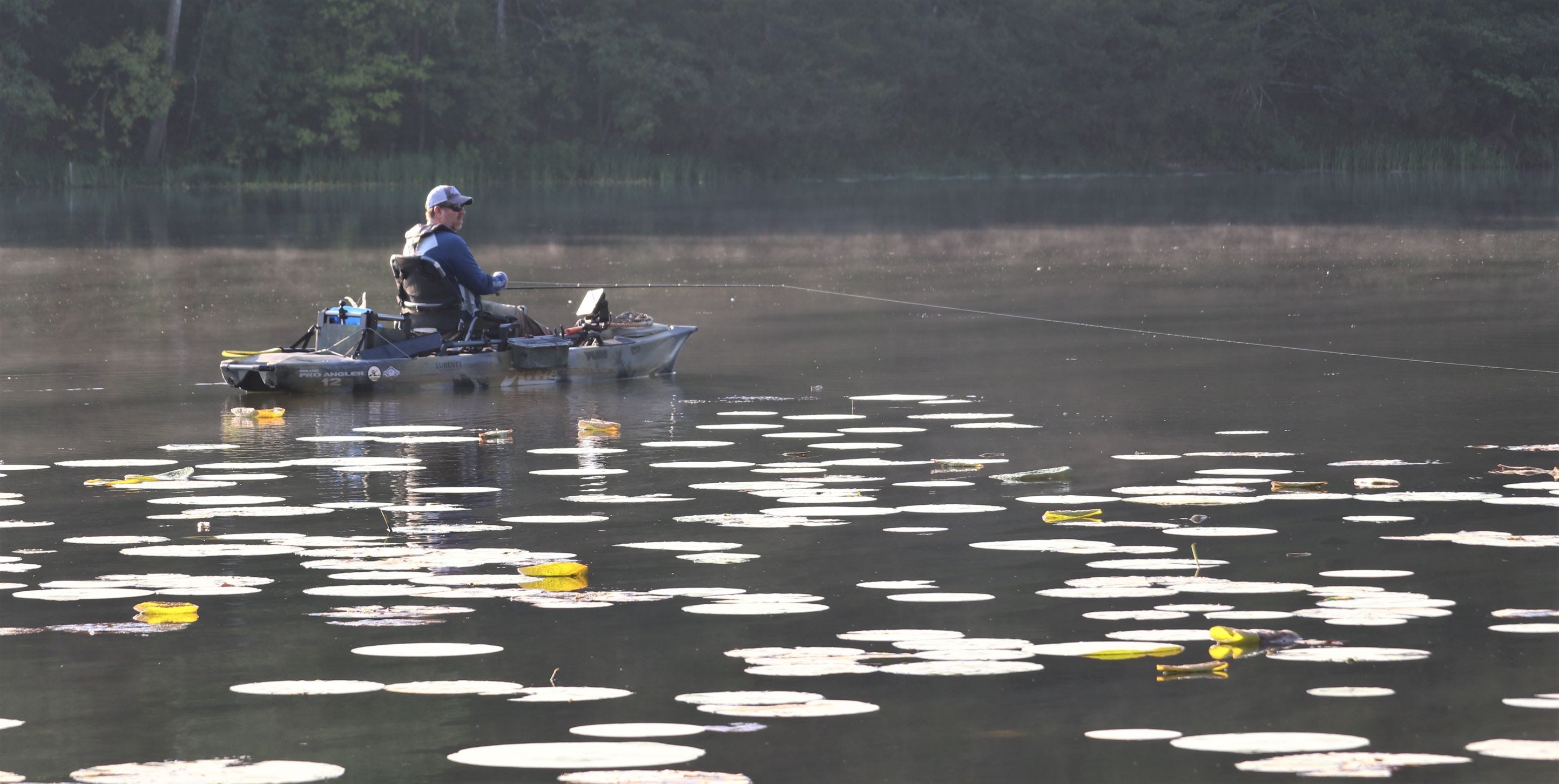

Controlling and positioning your kayak while fishing adds to the challenge compared to being in a larger, motorized boat. Wind, waves and an ongoing need to paddle or pedal while still making quality casts and presentations takes practice. There are some subtle things you can do to become a better kayak captain.
Do not over-paddle, your kayak won’t stop immediately. It is important to account for the continued forward motion so you don’t drift too close to the bank or the cover you want to fish. Also, a huge advantage of fishing a kayak over a larger boat is the ability to maneuver close to the shore and parallel the bank with your lure. Finding the right depth and going down the bank keeping the same depth is key to staying in the strike zone.
The lightweight and drifting nature of a kayak can be an advantage as well. With a little practice you can drift along with a light wind and drag a Ned rig, shaky head or other type of offering. Keeping your bait bouncing along the bottom at the exact same speed as the wind is moving a great way to entice a bite.
If you’re fishing on a larger lake with big boats, the best way to safely deal with large rolling waves heading your in your direction is to turn the nose of the kayak directly into the oncoming waves. Doing this will keep it from tipping you from side to side.
Safety First
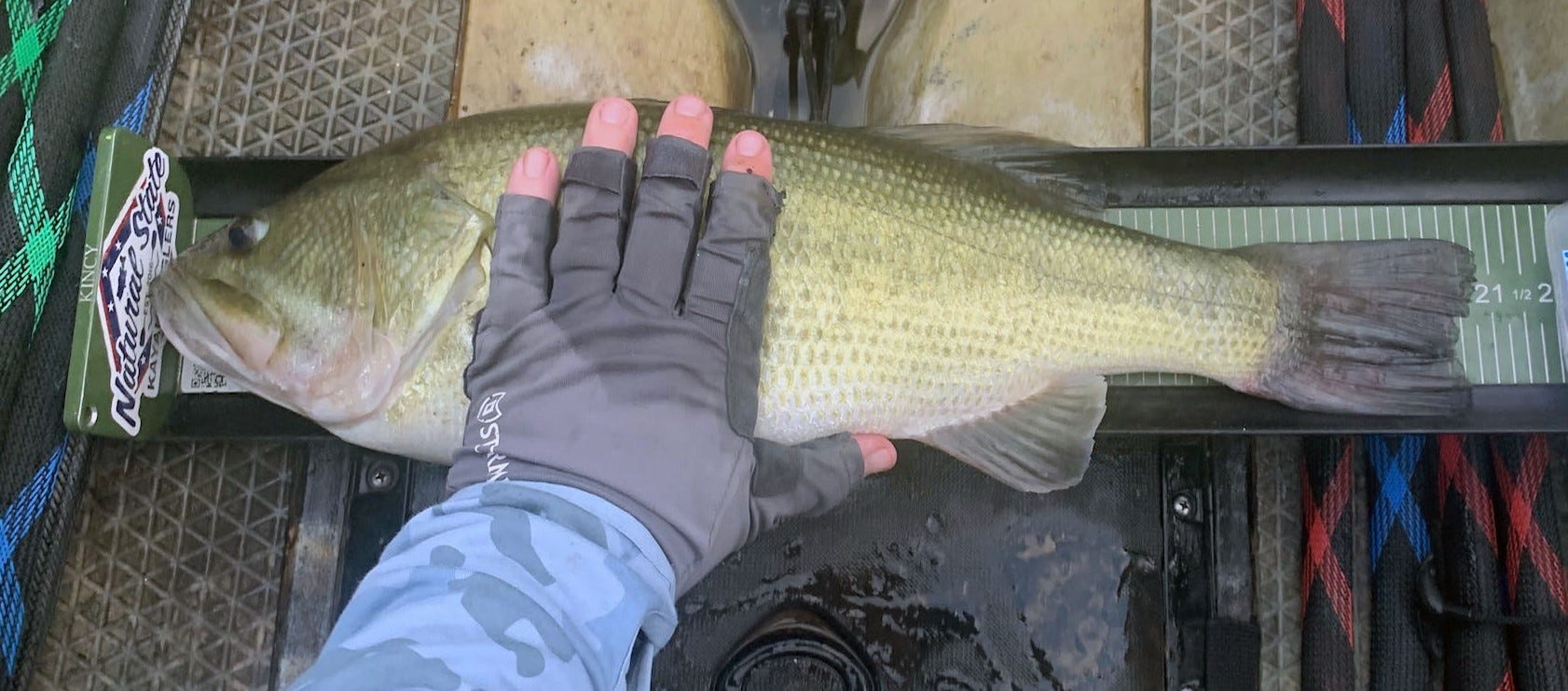

The most important key for successful kayak fishing trips is to ensure you are safe and can return to the water in the future. Always wear your personal flotation device (PFD). It is something any serious kayak angler never fishes without. If a PFD seems too hot and bulky, you might look into an inflatable PFD that goes around your neck and across your shoulders. These are very lightweight and come in manual and auto-inflate models.
In addition to the PFD, it’s good practice to have a whistle, visibility flag, and flashlight or pole light on your kayak. It’s also best to kayak with a friend, when possible. If you are going out on your own, make sure someone knows where you are going and what time you will return.
Summer sun and heat can take a toll on the kayak angler Be sure to carry plenty of water and protect your skin from the sun with sunscreen, a face buff or protective clothing.
5 Top Lures for Kayak Fishing
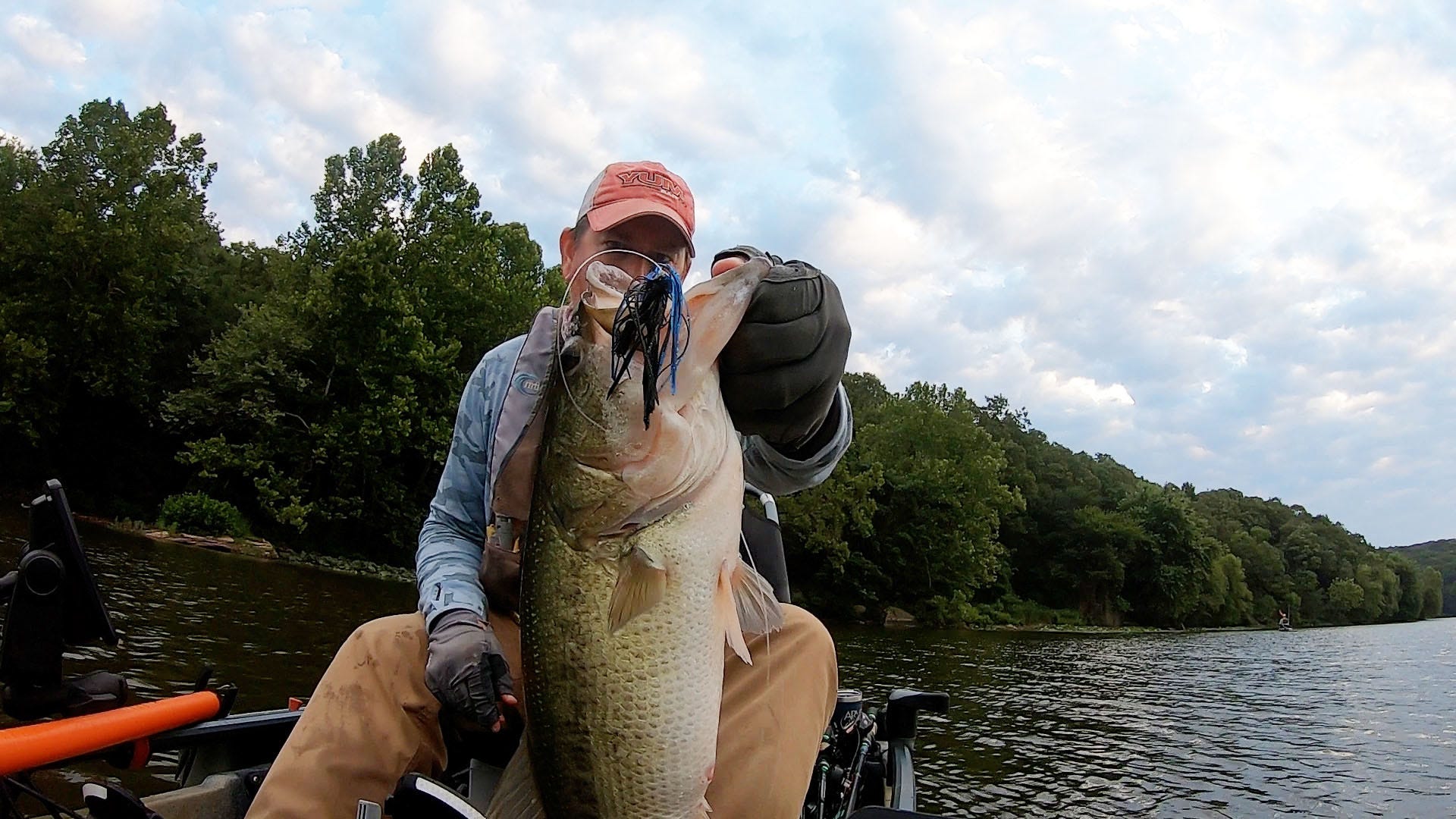

- Texas-Rigged Worm – Easy to fish o from a kayak, a slip sinker and a worm like the YUM Thump’n Dinger can really catch them.
- Ned Rig – When the bite is tough or water is clear, a Ned rig is tough to beat. The YUM Ned Dinger and Ned Minnow are good bait options for this rig.
- Spinnerbait – A good spinnerbait can catch fish from spring through fall and excels from a kayak because it is easy to throw and retrieve. A War Eagle tandem spinnerbait works well in a broad range of situations.
- Jig & Trailer – Bass eat the jig, and it can catch some big ones. Fish a jig just about anywhere, especially around boat docks and laydowns. Personally, I like the versatility of a BOOYAH Mobster swim jig with a Thump’n dinger trailer.
- Crankbait – A Bandit 100 or Bandit 200 is a great bait to catch bass shallow. To get reaction bites, bump it into cover or along weedline edges.



